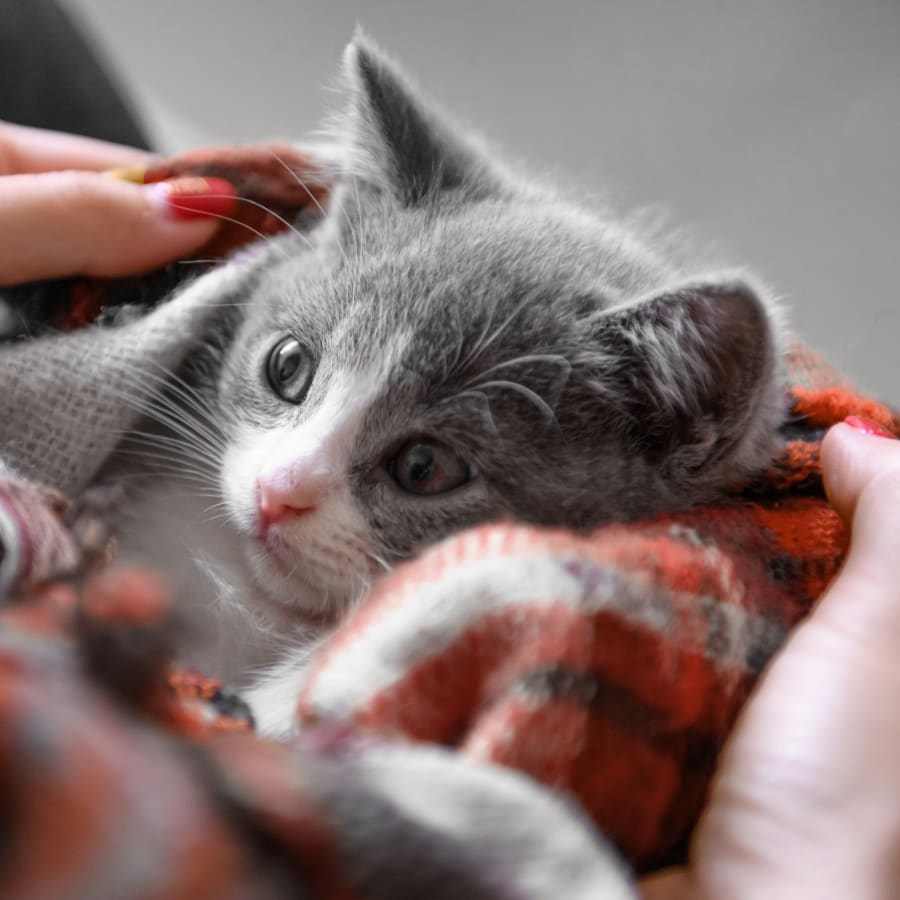Spaying & Neutering
What is spaying and neutering?
Spaying and neutering refer to surgical procedures performed on pets under general anesthesia in order to sterilize the animal.
Spaying (ovariohysterectomy) is the surgical procedure for female animals. This procedure removes a female's reproductive organs so that she is unable to have puppies or kittens.
Neutering (orchiectomy) removes the testicles from male pets so that he is unable to father puppies or kittens. The term 'neutering' can also, in some cases, refer to the desexing or 'fixing' of either gender.

Benefits For Cats
There are 6 key benefits of spaying or neutering your cat:
- Helps curb naughty behaviors, like spraying to mark territory.
- Neutered cats are less likely to stray from home.
- Your cat may become more affectionate.
- Reduces the risk of your cat contracting certain diseases.
- Helps decrease the risk of uterine infection in female cats.
- May decrease the risk of mammary (breast) cancer.
Benefits For Dogs
There are 5 key benefits of spaying or neutering your dog:
- Reduces the risk of prostate and other cancers.
- May curb marking and spraying behaviors.
- Helps to stabilize the mood of the dog.
- Reduces the mating urge.
- Can reduce sexualized behaviors.

Spaying & Neutering FAQs
- Why should I get my cat spayed or neutered?
Population Control
According to the ASPCA (American Society for the Prevention of Cruelty to Animals), it is estimated that around 3.2 million cats enter US animal shelters every year.
The absolute best way for you to help reduce the number of unwanted cats in Gillette area shelters is by spaying or neutering your feline friend.
Protect Wildlife
It is estimated that cats in the USA kill between 1.4 billion and 3.7 billion birds every year.
By helping to keep the number of homeless cats to a minimum, you help to preserve the population of wild birds and other wildlife in your community.
Cat Neutering Benefits
Male cat neutering can help to curb many undesirable cat behaviors such as spraying indoors and around your house to mark territory, roaming, howling, and fighting with other undoctored male cats. Reducing your cat's temptation to fight may also reduce their risk of injury, and of contracting Feline immunodeficiency virus (FIV) and Feline leukemia virus (FeLV).
Cat Spaying Benefits
Female cat spaying before the first heat cycle can help to reduce your cat's risk of developing pyometra (infection of the womb) and mammary tumors. It's also important to note that female cats carrying infectious diseases can pass serious conditions on to their kittens, who may then go on to spread the disease even further. The pregnancy and the birth process can be risky for young cats, and costly to their owners.
- Why should I get my dog spayed or neutered?
Population Control
According to the ASPCA (American Society for the Prevention of Cruelty to Animals), approximately 3.3 million dogs enter shelters every year across the USA.
Spaying or neutering your dog is the best way for you to help reduce the overall number of unplanned puppies each year while improving your pet's behavior and reducing their risk of some serious health conditions.
Dog Spaying Benefits
Spaying your female dog can help to prevent serious health problems such as pyometra, (a potentially life-threatening uterine infection), and mammary cancer.
Dog Neutering Benefits
Neutering your male dog helps to prevent your pet from developing testicular cancer and can also help reduce unwanted behaviors such as dog aggression, straying and humping.
- When should I have my pet spayed? What age?
To determine the best age to spay or neuter your pet speak to your primary care veterinarian. Some research indicates there may be long-term health benefits to spaying or neutering dogs after they have passed through puberty.
Many veterinary professionals recommend that female animals be spayed before their first heat, which can occur as early as 5 months of age. However, there is increasing evidence that this is too young as the animals have not been allowed to fully develop and grow.
- What should I know about the recovery process for my pet?
Spaying
After spay surgery, some clinics will want to keep your cat or dog overnight, while others will let her go home on the same day. The rule of thumb is generally 7-10 days of restricted activity.
Neutering
If there are no complications or other health issues, your dog or cat can usually go home on the same day of the procedure, with activity restricted for a few days while the incision heals.
For both procedures, we may send your pet home with a protective collar to keep it from licking the incision.
We typically book a follow-up visit to check on how well your pet has healed and to remove the stitches.
- Will my pet feel anything during the procedure?
No, your pet will be under general anesthesia, and will not feel anything during their spay or neuter procedure.
- Will my pet gain weight after the procedure?
Your puppy or kitten will continue to grow to their full adult weight after the spay or neuter procedure, and this naturally includes some weight gain.
However, your pet will not gain weight as a result of being spayed or neutered.
- Is this service part of your Pet Wellness Plans?
Spay/neuter services are not included in Wellness Plans because they are one-time procedures.
However, if your pet is on a Wellness Plan, you qualify for 10% off the spay/neuter procedure.
